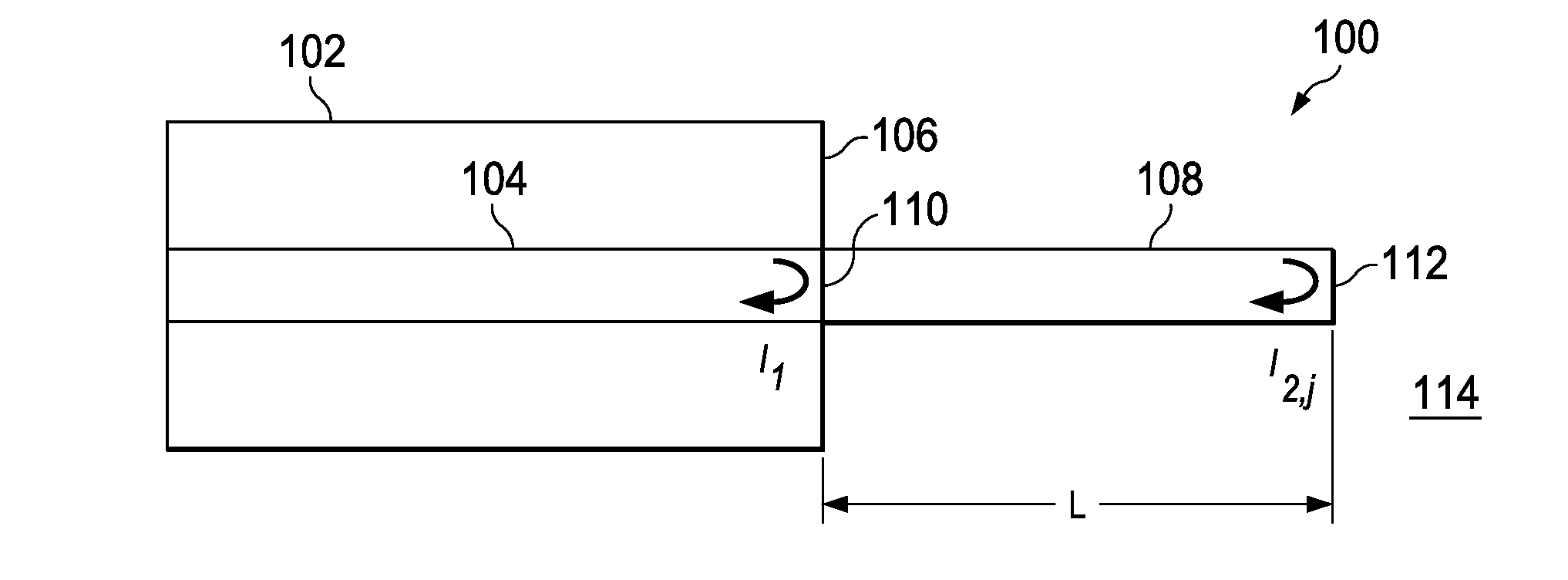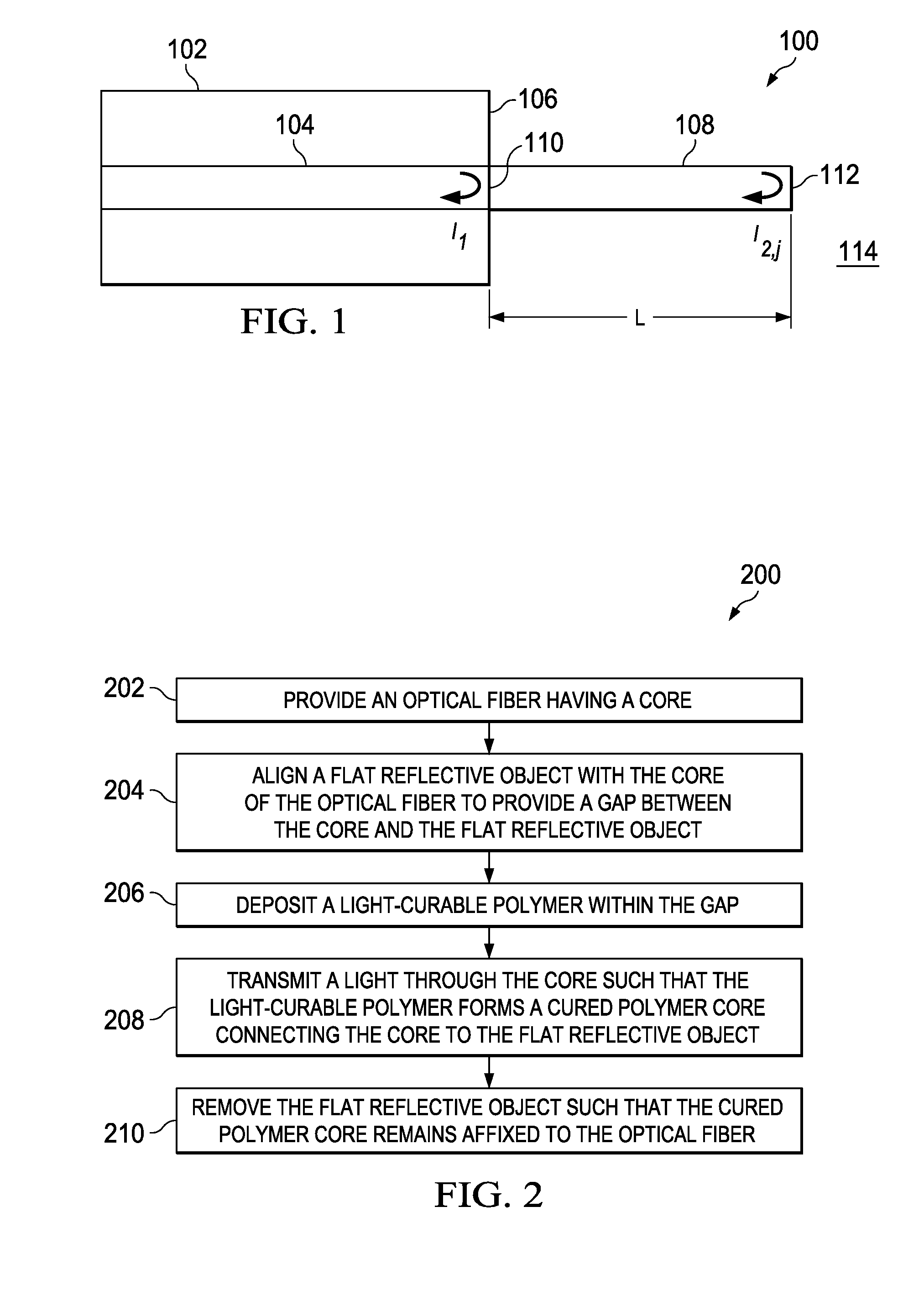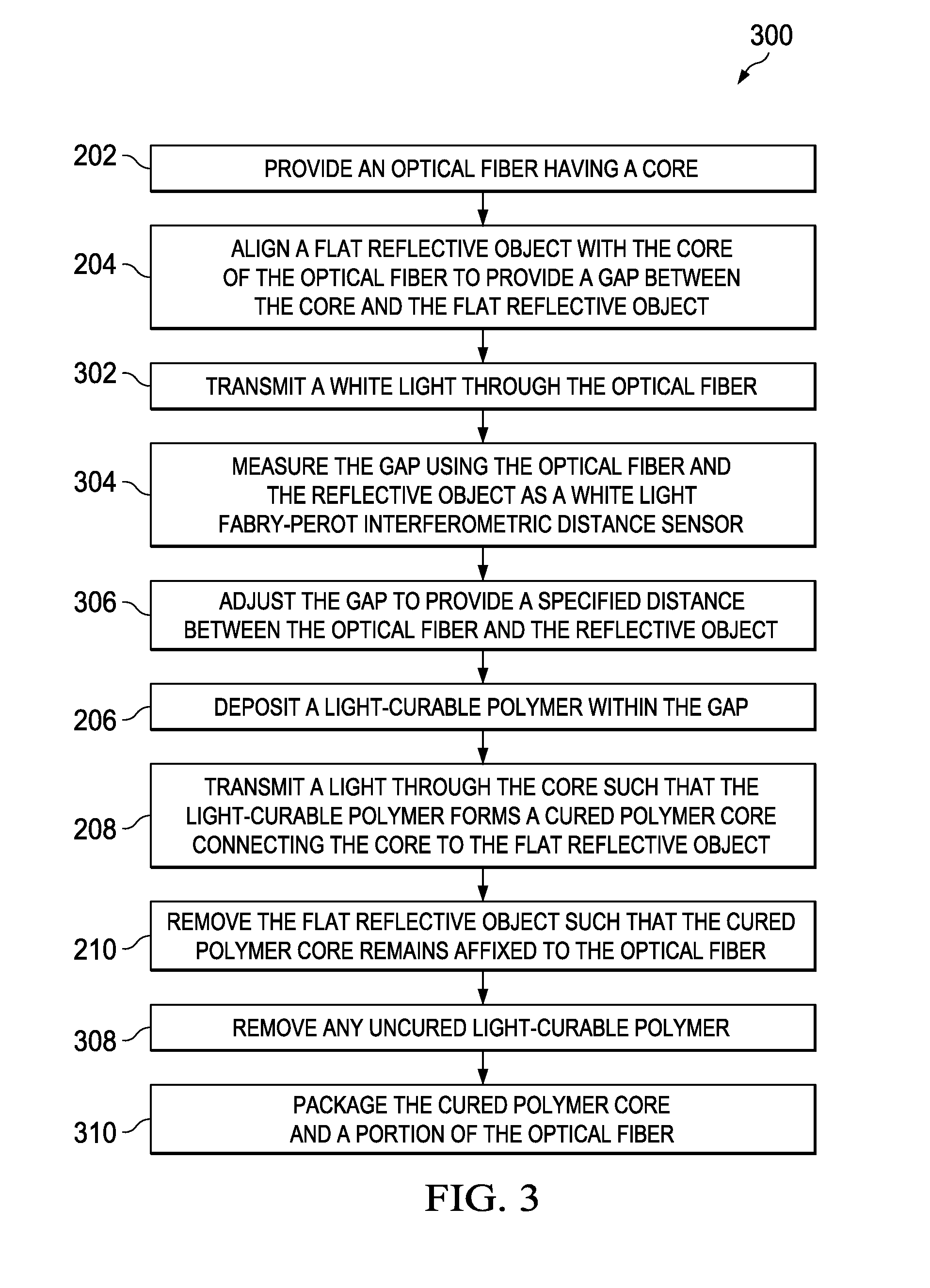Optical fiber based polymer core sensor
a technology of optical fiber and polymer core, applied in the field of optical fiber sensors, can solve the problems of ri sensors based on fiber gratings that are usually expensive, the interference pattern shifts, and the sensor system is complicated, and achieves the effects of high thermo-optic coefficient, simple fabrication techniques, and improved sensitivity
- Summary
- Abstract
- Description
- Claims
- Application Information
AI Technical Summary
Benefits of technology
Problems solved by technology
Method used
Image
Examples
Embodiment Construction
[0035]While the making and using of various embodiments of the present invention are discussed in detail below, it should be appreciated that the present invention provides many applicable inventive concepts that can be embodied in a wide variety of specific contexts. The specific embodiments discussed herein are merely illustrative of specific ways to make and use the invention and do not delimit the scope of the invention. The discussion herein relates primarily to optical fiber based polymer core sensors for refractive index and temperature sensor, but it will be understood that the concepts of the present invention are applicable to any optical fiber based sensors for strain measurement, distance measurement, toxin detection, biological agent detection, chemical process monitoring, pH measurement, analyte measurement, etc.
[0036]To facilitate the understanding of this invention, a number of terms are defined below. Terms defined herein have meanings as commonly understood by a pe...
PUM
| Property | Measurement | Unit |
|---|---|---|
| wavelength | aaaaa | aaaaa |
| length | aaaaa | aaaaa |
| diameter | aaaaa | aaaaa |
Abstract
Description
Claims
Application Information
 Login to View More
Login to View More - R&D
- Intellectual Property
- Life Sciences
- Materials
- Tech Scout
- Unparalleled Data Quality
- Higher Quality Content
- 60% Fewer Hallucinations
Browse by: Latest US Patents, China's latest patents, Technical Efficacy Thesaurus, Application Domain, Technology Topic, Popular Technical Reports.
© 2025 PatSnap. All rights reserved.Legal|Privacy policy|Modern Slavery Act Transparency Statement|Sitemap|About US| Contact US: help@patsnap.com



